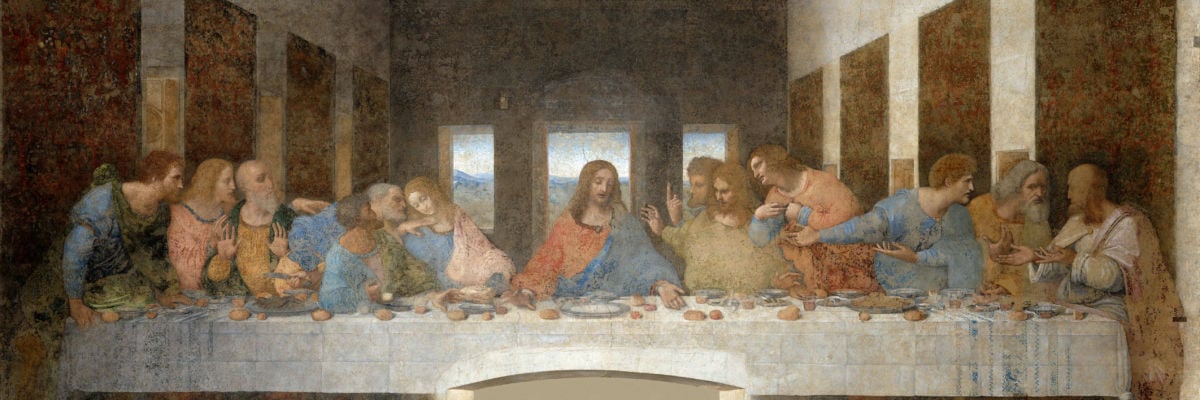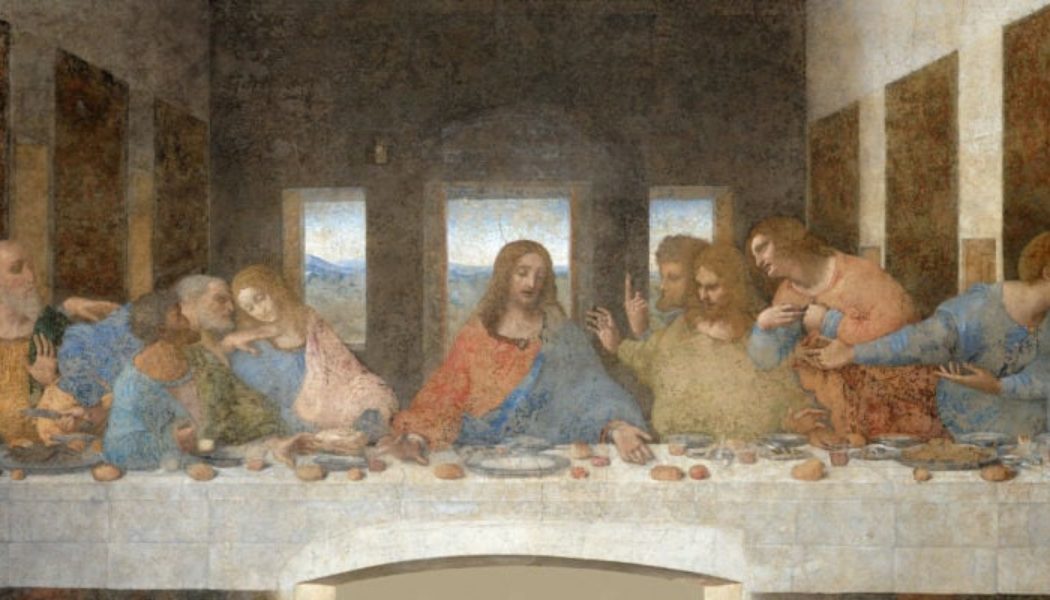
In the aftermath of the Olympics’ opening ceremony last Friday, at which a flamboyant troupe of dancers in drag performed a burlesque of the Last Supper, the inevitable and entirely just Christian uproar has been met with its own backlash. Christ-haters and online know-it-alls (many of them the same people) have been posting and sharing on social media that, ackshully, the scene was not meant to evoke the Last Supper but the Greek god Dionysius and his hard-partying pals. And that you would have known this if you had studied art history instead of praying to your imaginary God.
Some Christians are calling this “gaslighting,” and whether that’s the right name for it, I’m not sure—but without a doubt there’s a popular effort underway to install an Official Version of this event that exculpates the ceremony organizers and makes Christians look stupid. And any future mentions of this blasphemy will be invalidated. That’s a myth, didn’t you know? Fake news. Just Christians and homophobes being hysterical.
Put that way . . . yeah, that’s totally gaslighting. Here are some points to fight it:
1. It doesn’t have to be an either-or. Art (to use the term loosely) is often multivalent. The organizers could have set out to capture different aspects of, or combine, both the Dionysius scene and the Last Supper. And if you think about it, doing a mashup of one of Christianity’s most sacred moments with a scene of Bacchanalian debauchery isn’t really any less gratuitously provocative, offensive, or inappropriate for a ceremony intended to promote the unifying power of sport, is it?
2. Indeed, the painting that the ceremony’s creative director Thomas Jolly is widely presumed—including by his defenders—to be riffing on, Jan van Bijlert’s Feast of the Gods, was itself a deliberate play on the Last Supper as it is often composed in art, most famously in Leonardo da Vinci’s painting. Christians didn’t imagine this connection in a fever dream or invent it out of thin air, so stop being coy. (One Facebook commenter snarked, “I’m surprised they didn’t use a manger with a baby and a woman next to it [and say] it was Aphrodite and her son Cupid.”)
3. Notwithstanding Jolly’s protest, comments made by other producers of and participants in the event say flat-out that the Last Supper was at least one of the elements they were going for. Representatives of the Olympic organizing committee reportedly owned up that “Thomas Jolly took inspiration from Leonardo da Vinci’s famous painting to create the setting.” At least two of the performers involved in the performance that some reports are calling a “vogue”—a form of gay performance art—said they were aware that it was a Last Supper parody, with the woman occupying the central Jesus position calling it a “new gay testament.”
Furthermore, multiple reports have claimed that the official name for the segment supplied to the media was La Cène sur un Scène sur la Seine—a triple homophone that means “The Last Supper on Stage on the Seine.” I haven’t found official confirmation of this, so perhaps it’s not true; or perhaps it has since been scrubbed, as the whole video of the incident has from the Olympic website. But it’s certainly plausible.
4. There are details of the actual performance that pertain to the Last Supper scene more than the Greek myth. Note the blue dress on the central woman, matching the blue robe worn by Jesus in the da Vinci painting. The halo over her (what one secular outlet dismissed as a “star crown”) is curiously shaped more like a monstrance than the halos you see in most religious art or angel Halloween costumes (or the faint one over the central figure of Apollo in the van Bijlert painting). No artist would leave that detail to chance, not when veering so close to the biblical event at which Jesus instituted the Eucharist.
5. There are standing historical and cultural conflicts that cast doubt on the claim that this was an innocent misunderstanding (albeit of an undeniably perverse scene, with garishly dressed drag queens and one performer partially exposing his genitalia with a child performer—of course—just inches away). The gay activist movement and its elite allies are currently engaged in a war, not against ancient Greek myths, but against the one religion that still seeks to oppose and temper their activism. Thomas Jolly claims that his intent was to promote “community tolerance,” but we have been at this long enough to know what that code word means.
And the nation of France, for which I have special respect and affection, has produced some of the Church’s greatest saints as well as, in modernity, some of its most vicious enemies. The eldest daughter of the Church, in modern times turned hotbed of atheism, heresy, subversion, anticlericalism, and laïcisme, has in its cultural bones a complicated impulse of love and loathing for the Faith. In context, it makes far more sense for that scene to have been principally aimed at evoking the Last Supper than some old pagan figures that ninety-nine percent of Frenchmen, or global TV viewers without an art degree, would never recognize.









